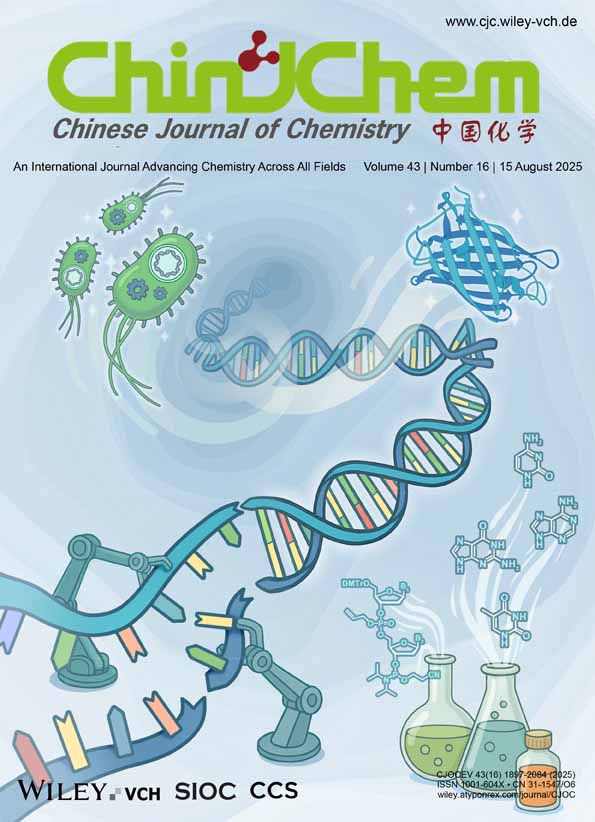Synthesis, Crystal Structure of Cis-dioxo-catecholatotungsten(VI) Complex and Its NMR Studies on the Interaction with ATP
Abstract
Cis-dioxo-catecholatotungsten(VI) complex anion [W(VI)O2-(OC6H2O)]2-was obtained with discrete protonated ethylene-diamine (NH2CH2CH2NH3)+ cations by the reaction of tetra-butyl ammonium decatungstate with catechol in the mixed solvent of CH3OH, CH3CN and ethylenediamine, and compared with its molybdenum analogue [Mo(v)O2(OC6H4O)2]3-by crystal structure, UV, EPR. The results of the UV and EPR spectra show that tungsten is less redox active than molybdenum since the molybdenum is reduced from Mo(VI) to Mo(V) but tungsten stays in the original highest oxidized state Mo (VI) when they are crystallized from the solution above. It is worthy to note that [W(VI)O2(OC6H4O2)]2-shows the same coordination structure as its molybdenum analogue in which the metal center exhibits distorted octahedral coordination geometry with two cis-dioxocatecholate ligands and might have the related coordination structure feature with the cofactor of flavoenzyme because [Mo(v)O2(OC6H4O)2]3-presented essentially the same EPR spectra as flavoenzyme. The NMR studies on the interaction of the title complex with ATP reveal that the reduction of W(VI) to W(V) occurs when the title complex is dissolved in D2O and the W (V) is oxidized again when ATP solution is mixed with original solution and the hydrolysis of the catechola-to ligand take places at mean time being monitored by 1H NMR and 13C NMR spectra.




